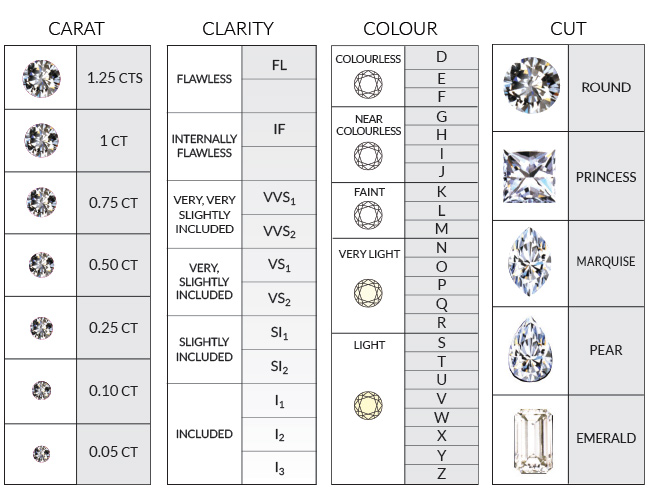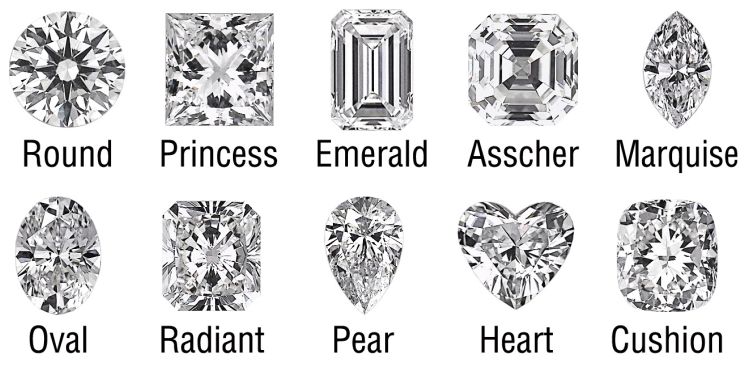Finally cut, which is the most important of all the 4C’s. Cut has the greatest opportunity to unlock the most potential out of the diamond; it is also the only factor that is influenced by man.
The standard round brilliant-cut diamond remains the most popular cut for diamond, when perfectly proportioned and cut with specific angles relative to one another this will show off the optimum optical effect of fire and brilliance.
There are however, a myriad of other cuts that are equally prized for many different reasons. These are known as fancy cuts and they express the decorative and aesthetic potential of diamonds as well as the evolution of fashion and stone cutting over the years.
When it comes to the beauty of a diamond, CUT is the single most important factor. Cut is actually man’s contribution to the beauty of a diamond, for it is the cutter who releases the fire and brilliance of a stone. When we talk about cut, we are actually referring to its shape. Firstly its outline – is it round, square, or rectangular? And also what is its facet arrangement – that is the placement of the facets?
We can then describe the quality of the cut in different categories:
Proportion – refers to the angles, proportions, and the relationship between the parts of a diamond.
Symmetry – refers to the symmetrical appearance of the stone. E.g. the concentric positions of the table and culet for a round stone.
Finish – the exactness of its shape and the arrangement of the facets. Also the quality of the polish.
All three of these elements together unlock a diamond’s optical potential.






